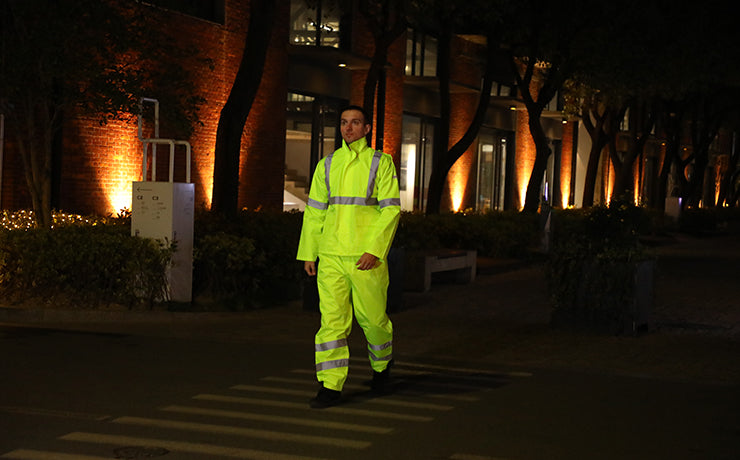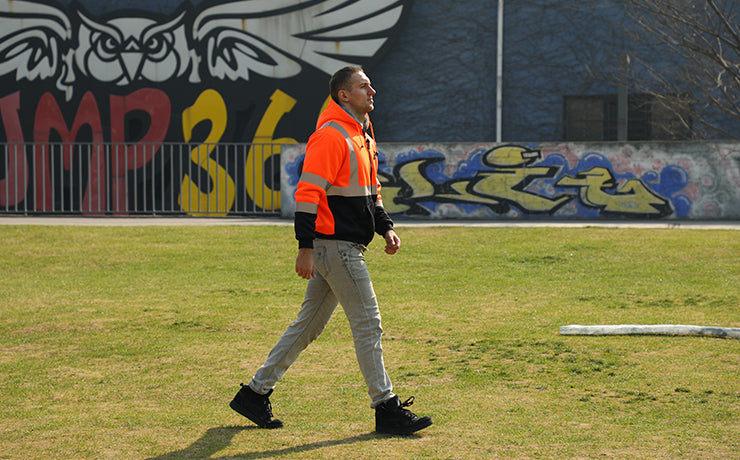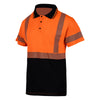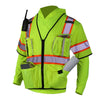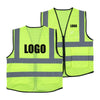The Complete Guide to High Vis Colors - From Physics to Psychology

When we think of safety, we often think of rules, warning signs, and personal protective equipment. We rarely, if ever, consider the role that color plays in keeping us safe. However, as it turns out, color is a crucial element of safety vests and plays a vital role in making workers visible and easy to spot. It's not just a matter of preference - there is science behind the selection of colors for safety vests. In this blog post, we're going to explore the complete guide to safety vest colors and why certain colors are preferred over others.
The Psychology of Color
Color is more than just a visual sensation - it also has a psychological impact on our minds and emotions. In the context of high visibility clothing, color choice can have a significant impact on how the wearer is perceived by others. For example, fluorescent yellow-green is a color that is associated with safety and caution, which is why it's commonly used in high-visibility vests. It's also a color that is easy for the human eye to distinguish from its surroundings, making it an ideal choice for outdoor work environments. On the other hand, fluorescent orange-red is associated with warning and danger, which is why it's commonly used in hunting apparel. By understanding the psychology of color, we can make more informed decisions about the color of our safety vests.
The Physics of Color

Color is not just a matter of perception - it's also a physical phenomenon. The color of an object is determined by the wavelengths of light that are absorbed and reflected by the object's surface. In the context of safety vests, this means that different colors will reflect light differently, making some colors more visible than others. For example, fluorescent yellow-green is a color that reflects a lot of light in the green and yellow spectrum, making it highly visible to the human eye. Conversely, fluorescent orange-red reflects more light in the orange and red spectrum, making it more visible in low-light conditions. By understanding the physics of color, we can select the right color for our safety vests based on the lighting conditions of our work environment.
ANSI/ISEA Color Standards

To ensure that safety vests are as effective as possible, the American National Standards Institute (ANSI) has established guidelines for the color and design of high visibility clothing. According to ANSI/ISEA-107, the three approved colors for high-visibility vests are fluorescent yellow-green, fluorescent orange-red, and fluorescent red. However, this doesn't mean that other colors can't be used for safety vests - they need to be carefully designed to be as visible as possible. For example, pink is an increasingly popular color for safety vests worn by women that work in non-ANSI-regulated environments, but it needs to be a bright, vibrant pink to be considered high-visibility. Similarly, blue and black safety vests can still be effective, but they need to have reflective trim or tape to enhance their visibility.
Choosing the Right Color for Your Work Environment
Now that we understand the psychology and physics of color and the ANSI/ISEA color standards, we can make informed decisions about the right color for our safety vests. When choosing a color, it's important to consider the lighting conditions of your work environment.
Fluorescent Yellow-Green

For low-light environments, fluorescent yellow-green is an excellent choice. Yellow increases the person's visibility more than other colors. Unsurprisingly, workers in most construction sites and airports choose this color.
Fluorescent Orange-Red

For outdoor work environments with a lot of green and yellow surroundings, fluorescent orange-red or fluorescent red may provides more contrast. Orange vests are quite popular with flaggers and other road construction workers.
Pink, Blue, Black, and Other Colors
If you're working in an industry such as healthcare where pink is a popular color for safety vests, make sure the pink is bright and easily distinguishable. And if you're considering a non-traditional color such as blue or black, add reflective tape or trim to enhance its visibility. If you're going for a non-ANSI color, make sure the reflective material stays bright in night conditions.

It's important to verify your workplace guidelines before choosing a color. ANSI-certified safety vests are an excellent way to ensure compliance with workplace standards.
By understanding the psychology and physics of color, and following the ANSI/ISEA guidelines, you can choose the right color for your safety vest - enabling you to stay safe in any work environment.
Caring for Your Safety Vest - Make it Last Longer
In addition to choosing the right color for your safety vest, it's important to take good care of your vest. Over time, fluorescent clothing can become faded or damaged due to exposure to UV rays and other environmental factors. To keep your safety vest in top condition, make sure you follow the manufacturer's instructions on how to clean and store the vest correctly. It's also a good idea to inspect your safety vest for any signs of wear and tear before you use it.
Conclusion
In conclusion, color is a crucial element of high visibility safety clothing, and there is science behind the selection of colors for high-visibility apparel. By understanding the psychology and physics of color and the ANSI/ISEA color standards, we can choose the right color for our work environment and ensure that we're as visible as possible to those around us. Whether you're working in construction, healthcare, or any other industry that requires high-visibility apparel, be sure to consider the critical role that color plays in keeping you safe.
-
Posted in
ansi/isea 107, high-vis clothing

